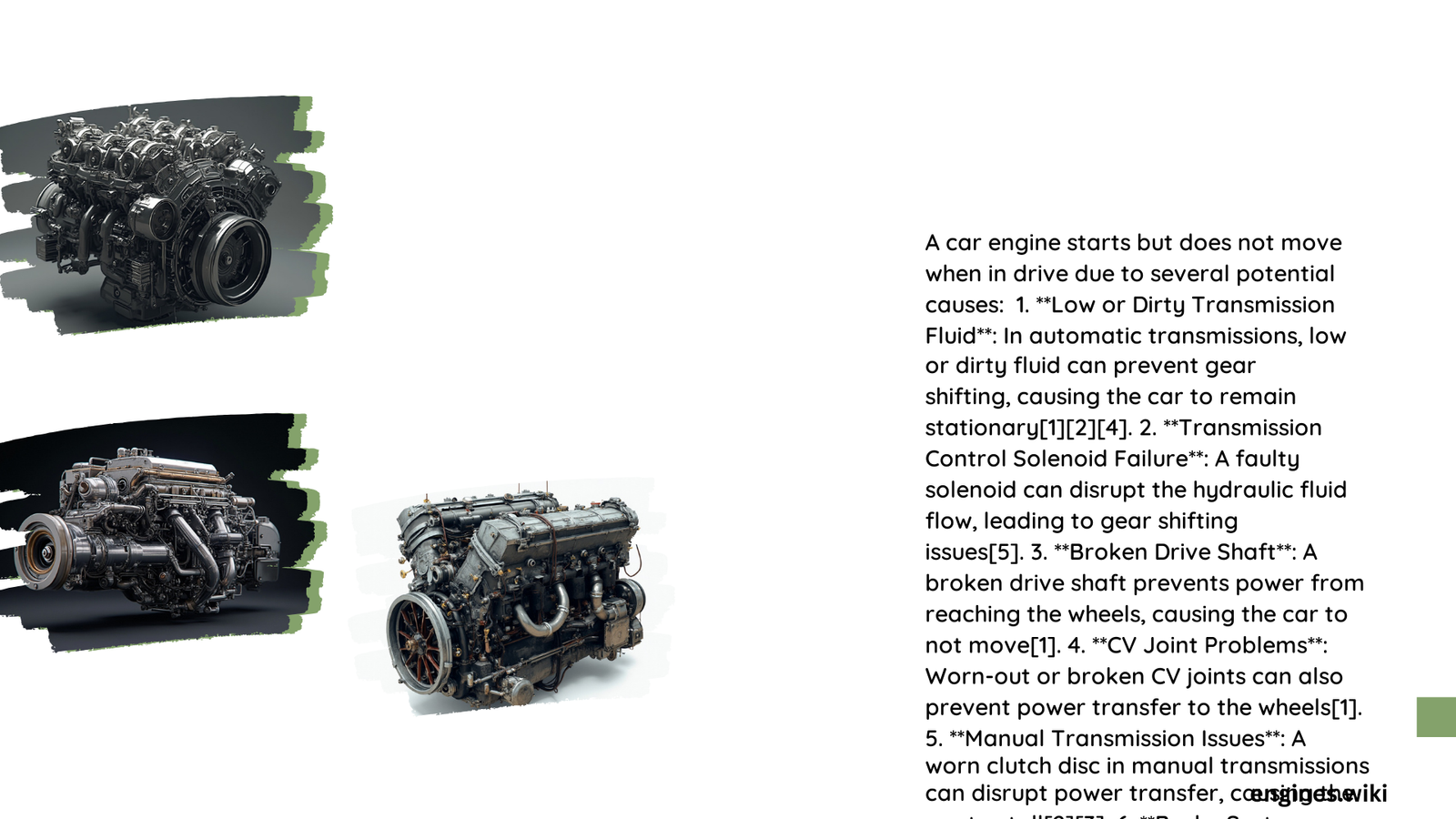When a car engine starts but refuses to move, it signals a complex mechanical or electrical problem that requires systematic investigation. This frustrating scenario can stem from multiple potential issues ranging from transmission failures to fuel system complications, potentially leaving drivers stranded and seeking immediate solutions.
What Causes Engine to Start Without Vehicle Movement?
Fuel Delivery Problems: Why Might Fuel Not Reach Engine Components?
Fuel system complications represent a primary reason for engine start without movement. Consider these critical factors:
Fuel Pump Malfunction
- Symptoms:
- No fuel pressure
- Weak pumping mechanism
- Electrical connection issues
| Diagnostic Step | Action Required |
|---|---|
| Listen for Pump Hum | Check electrical connections |
| Pressure Test | Verify fuel system integrity |
| Electrical Diagnostics | Inspect pump relay and fuse |
Fuel Filter Blockage
- Restricted fuel flow prevents proper engine performance
- Accumulation of debris interrupts fuel transmission
- Requires immediate replacement to restore functionality
Transmission Engagement Failures: How Do Transmission Issues Prevent Movement?
Transmission problems can completely immobilize a vehicle despite engine operation:
Automatic Transmission Challenges
- Potential Causes:
- Low transmission fluid
- Faulty solenoids
- Internal mechanical damage
- Worn clutch bands
Manual Transmission Complications
- Clutch system failures
- Damaged synchronizers
- Broken shift linkages
Electrical System Disruptions: What Sensors Might Cause Movement Prevention?
Electrical components play a crucial role in vehicle mobility:
Critical Sensor Failures
- Crankshaft position sensor
- Camshaft position sensor
- Transmission range sensor
- Engine control unit (ECU) malfunction
Diagnostic Approach: How to Systematically Identify Movement Issues?
Recommended Troubleshooting Steps
- Perform comprehensive diagnostic scan
- Check transmission fluid levels
- Inspect electrical connections
- Test sensor functionality
- Verify mechanical component integrity
Repair Cost Considerations: What Financial Investment Might Be Required?
| Repair Type | Estimated Cost Range |
|---|---|
| Fuel Pump Replacement | $300 – $1,000 |
| Transmission Repair | $500 – $3,000 |
| Sensor Replacement | $100 – $500 |
| Comprehensive Diagnostic | $80 – $250 |
Professional Intervention: When Should Expert Assistance Be Sought?
While some diagnostics can be performed independently, complex issues require professional automotive expertise. Certified mechanics possess specialized diagnostic tools and extensive experience in resolving intricate vehicle mobility problems.
Prevention Strategies: How to Minimize Future Movement Complications?
- Regular maintenance
- Timely fluid replacements
- Annual comprehensive vehicle inspections
- Address warning signs promptly
Conclusion

Car engine starts but does not move scenarios demand methodical investigation and precise diagnostic techniques. Understanding potential causes empowers vehicle owners to make informed decisions about repair strategies and potential interventions.
